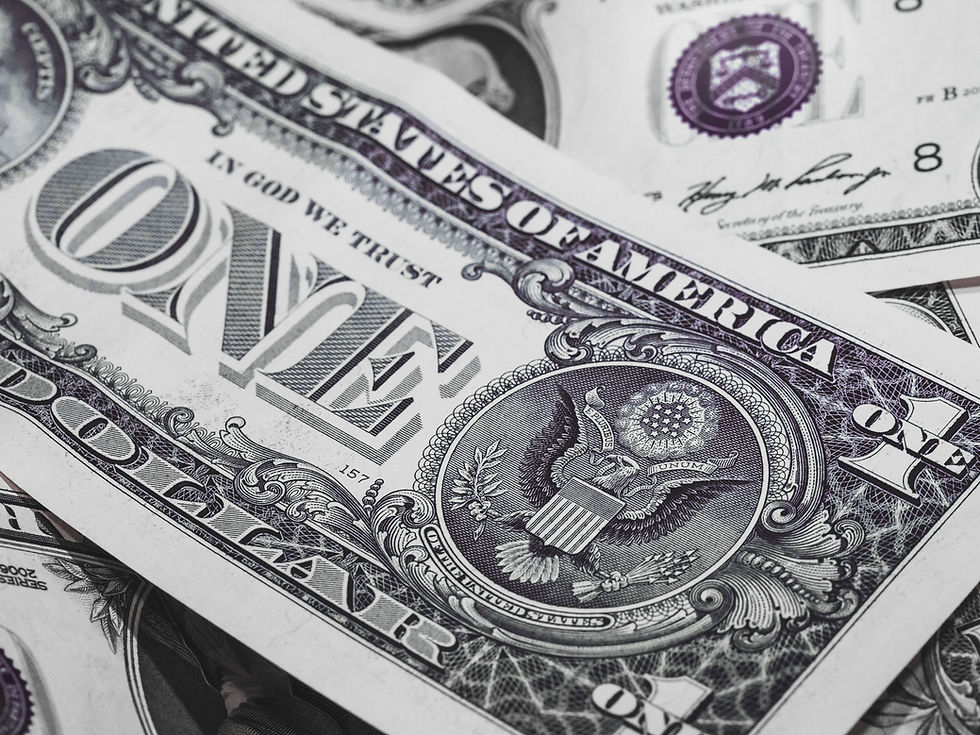What the Fed?!
- Jeran Van Alfen, CFP®

- Aug 4, 2019
- 3 min read
This past week the Federal Reserve held their July meeting and announced a 0.25% reduction in the federal funds rate, to a new range of 2% - 2.25%. Here are some notes to help you understand what this means:

As a reminder, the federal funds rate is the interest rate that banks and financial institutions charge for loaning money to each other, typically overnight. Banks have to hold a certain amount of money in reserves at zero interest, so with the rest of the cash on hand, they try to put that to work and the federal funds rate defines what they can earn for lending this money out.
The Federal Reserve uses the federal funds rate to control the supply of money. Raising rates make it more expensive to borrow and tightens the supply of money, while lower rates increases money supply and flow and is what people sometimes call “printing money.”
This was the first rate cut since December 2008
The Fed’s statement was little changed since June with economic activity noted as ‘moderate,’ and labor market as ‘strong,’ but inflation remaining low, and business fixed investment still ‘soft.’
This was a move largely expected by financial markets
Growth of our economy: the preliminary measure of 2nd quarter U.S. GDP came in at 2.1%, a notably slower pace than Q1, but in line with expectations. This slowdown was partially driven by weather effects, lower exports due to the administration’s trade policy, as well as ongoing weakness in business fixed investment.
Recent data puts core inflation at up to a half-percent under the Fed’s 2.0% policy target.
Summing it all up
This move by the fed was expected. However, there is debate on if the Fed’s actions are the right moves right now. Over the last few months, there has been a lot of chatter about our economic growth slowing down. While the economy is still growing, we are not seeing corporations spending as much as is expected. The cause of this is difficult to measure but there is a consensus that executives are holding back on investing in multi-year projects because of uncertainty. Without knowing how tariff policy will affect future business conditions and global trade, it is difficult for companies to budget for future investments. Time will tell if interest rate policy will prolong economic growth and prevent US companies from importing some of the economic lag that we are seeing around the world.
There are also some political components to this interest rate action. Some argue that the Fed is becoming a sort of global central bank needing to take action based on the results of economic conditions of Asia and Europe. While some see this as overstep, others argue that it is necessary based on how global trade affects our economy. A larger political consideration is how the Fed’s actions will reflect on the administration in an upcoming election year. The most difficult predicament for a sitting President staring at a re-election campaign is a deteriorating economy, or, worse, a recession. This has been the primary reason behind incumbents losing their jobs (think Bush Sr. in 1992 and Carter in 1980). With patterns that we’ve seen in this Presidency, it’s been surmised that the Fed chair may be at risk to lose his job. Although such action could undermine global confidence in the Federal Reserve’s independence and is unlikely in most instances, it is a potential risk.
Overall, we would expect to see stock and real estate valuations increase based on the Fed’s actions however if they try to stimulate the economy for too long people worry that these asset classes will artificially inflate too much to the point of being at risk for a bubble. However, last week we did not see any bullish action in these markets due to continued tariff threats and lower corporate earnings. The Fed will continue to have a balancing act in front of them in dealing with a mature business cycle, political policy, and changes in the global trade landscape.




Comments